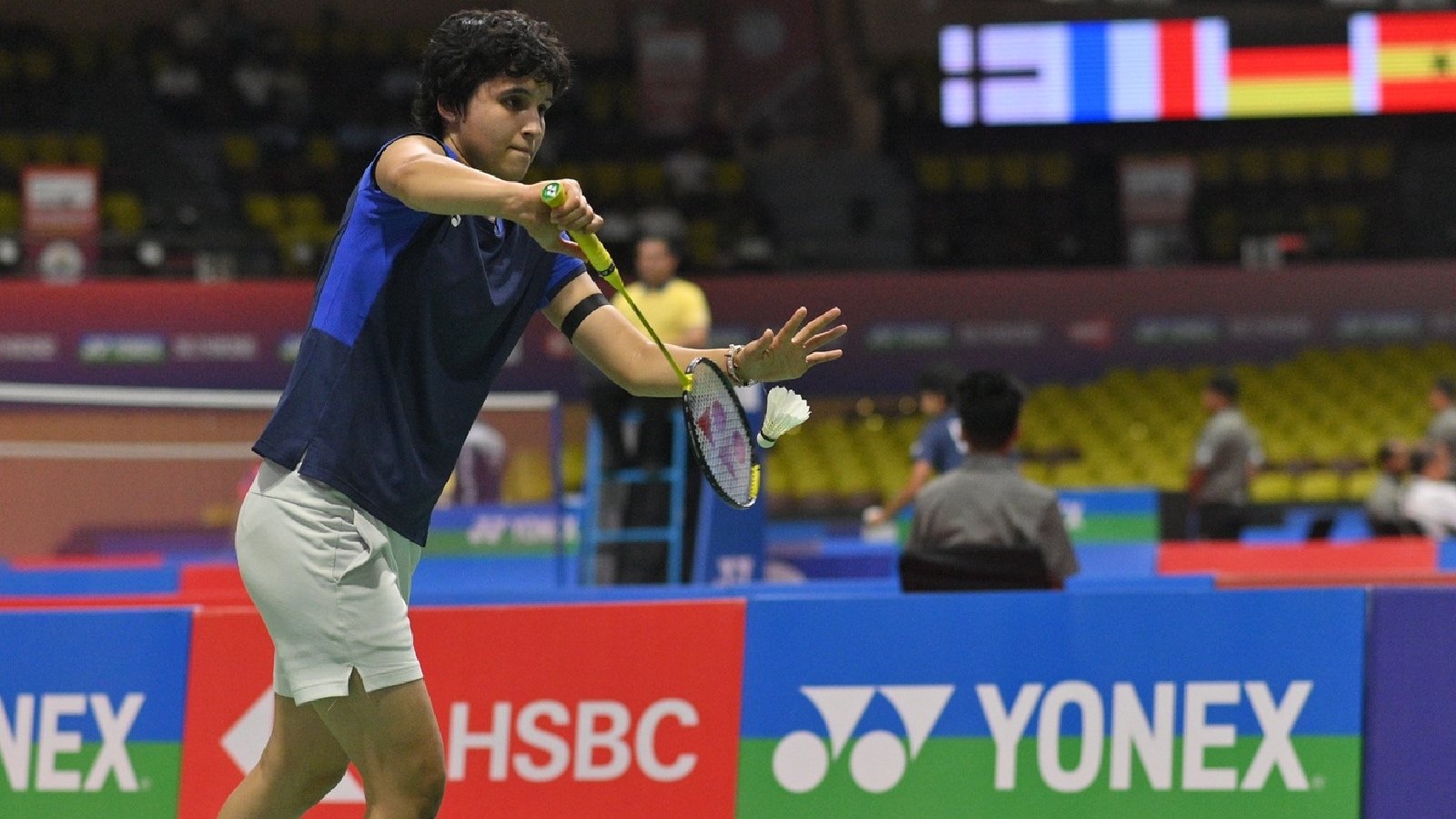“Why should pressure be seen in a negative way?” Unnati Hooda asks, calmly – at once admitting there’s pressure, and also declaring that she won’t allow it to overwhelm her.
She doesn’t mouth clichés like ‘pressure is a privilege.’ It’s a proper headache alright, but she’s equipping herself to deal with it, as India searches for a first badminton junior world title since Saina Nehwal won it 17 years ago.
Having beaten PV Sindhu at this year’s China Open, the Rohtak youngster has made it clear that she is carrying the Indian baton. She’s been on the senior circuit, and reached as high as World No.33.
But that’s exactly why both she and Rakshitha Ramraj, who didn’t linger much in juniors, face the brunt of the expectations. “Me, Tanvi Sharma and Rakshitha have done well on the senior circuit. So it’s obvious that people will have high hopes for us. They have faith in our capability. So thinking of it as pressure is unnecessary and I don’t see it in a negative way,” Unnati says.
It’s a very genteel ‘Bring it on’ bugle, not only due to the general equilibrium and realism in her personality, just like Saina, but because of the format and badminton’s familiar bane – the drift.
Guwahati is a bit of a contained storm of an arena. Because of the mammoth space available at the Rajiv Gandhi Indoor Stadium where the National Centre of Excellence is located, the courts are placed in a hexagonal shape. So the drift is wild – it varies from court to court.
“We’ve been training here, we know the drift…” Unnati starts talking of the home advantage, before adding, “though it depends on the day.”
Story continues below this ad
The format is a tinderbox. The 15-point-by-3-sets format explodes from the word go. Hong Kong’s Liu Anna gave Unnati a tough time in her opener, though the Indian won 15-8, 15-9, before American Alice Wang was subdued 15-8, 15-5. One needs to hit the ground running, before the contest becomes a sprint. In a 15-point race, the halfway mark comes at 8 and then there’s just 7 points left. Hence, there’s no time to ease in, or dawdle.
Learning on the job
For Unnati and Rakshitha who stopped playing on the juniors circuit, opponents are unfamiliar, so the first set goes in quickly rustling up a plan, without making too many mistakes and not starting slow – almost an Indian badminton DNA strand.
“Here the rhythm of playing is important. We are doing a lot more speed drills in warm-up. It’s a short match, so you need to be attentive and can’t take risks or try new things. From the start, you have to be ready, and can’t give away leads,” Unnati explains of the fraught format, ahead of taking on Malaysian Carine Tee.
There are three Indians, three Thais, two Chinese, two Malaysians, two Japanese and two Taiwanese besides a Sri Lankan and a Vietnamese in the last 16. The 15-point format took out defending champion Xu Weng Jin of China, as Japanese Yuzuno Watanabe took a 6-2 lead in the decider and won points in a clump. For Unnati too, these leads will be make or break. “I will focus on the match, because we have worked so hard for this,” she assures.
Story continues below this ad
“I’ll take it step by step,” she says, though the whirlwind clamour to get that world title at home will rise in decibel. She’s settled into a routine – cocooned away at the hotel, playing her matches in the morning and practising the same time in the evening.
But very little can prepare them for actual cold starts of a 15-pointer. Usually, warm-ups are about phased muscle activation, a gradual process. But fast movement drills have been incorporated in pre-match warm-ups as it dawned upon everyone that one could get roasted in the first set if they don’t get going.
Tanvi plays Chinese Li Yuan Sun and Rakshitha has Sri Lankan Ranithma Liyanage to contend with.
“We learnt a lot from others in the team event. The team spirit was great,” Unnati says.
Story continues below this ad
It helps split the pressure three ways, unlike when Saina won India’s only junior title in 2008. But the question still remains: ‘Can she be the next Saina?’




